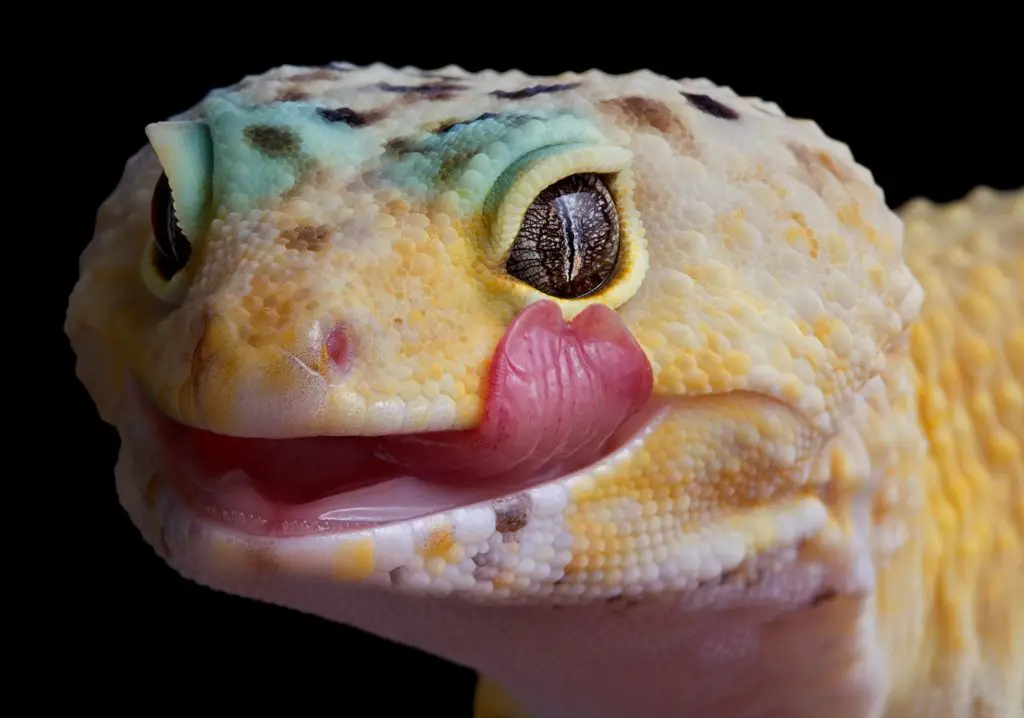Leopard Geckos breed for a long period each because they only lay a couple of eggs at a time. Let’s find out more about their reproductive cycle…
Last updated on February 14th, 2023 at 11:11 am
In general, Leopard Geckos will breed from December to March whilst they are naturally ovulating. They then lay two eggs every few weeks until September. For most females, this means the whole breeding season lasts about 9 months, and they will end up laying anywhere from 8 to 12 eggs.
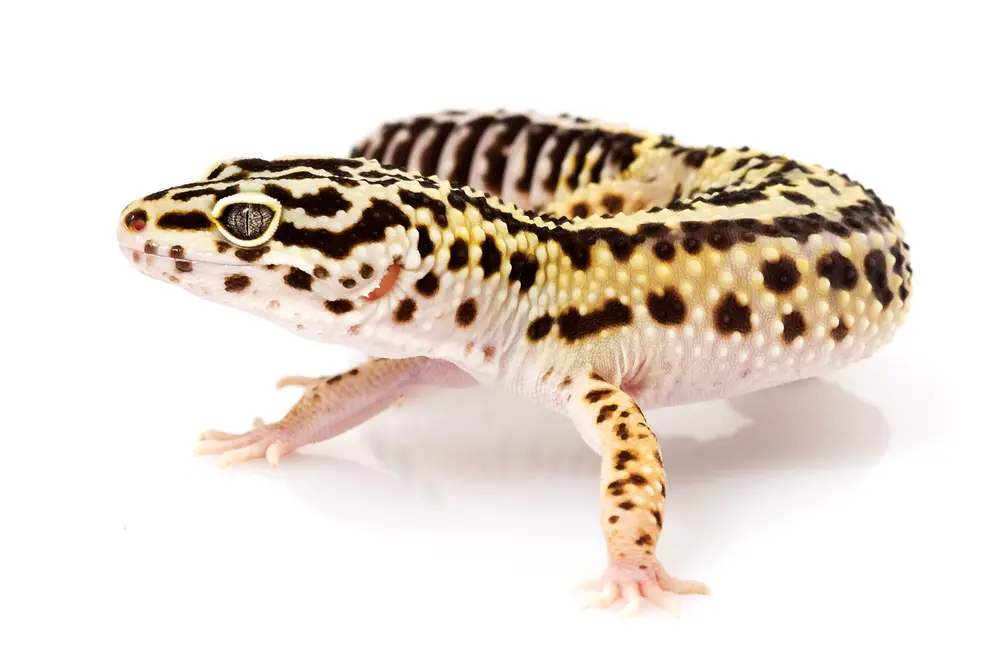
How many eggs do leopard geckos lay in a season?
Female leopard geckos will usually lay a maximum of 6 pairs of eggs during the breeding period. They lay each pair within the interval of a few weeks.
They might also lay lesser or more pairs depending on the female. Things like their size, weight and health tend to affect their fertility rate.
But generally, they will lay about eight to twelve eggs during the breeding period. This can happen over a span of around 4 to 5 months.

How long do leopard geckos stay pregnant?
After the mating has concluded, female leopard geckos stay gravid (pregnant) for around four to eight weeks. They will then deliver their first pair of eggs.
Successively, they will continue to lay more pairs every 2 to 3 weeks. This will happen until she has delivered a total of as few as eight or as many as twelve eggs.
Choosing a sexually mature female gecko to breed is important. This will help you in getting the maximum number of fertile eggs and reduce the number of unfertile ones.
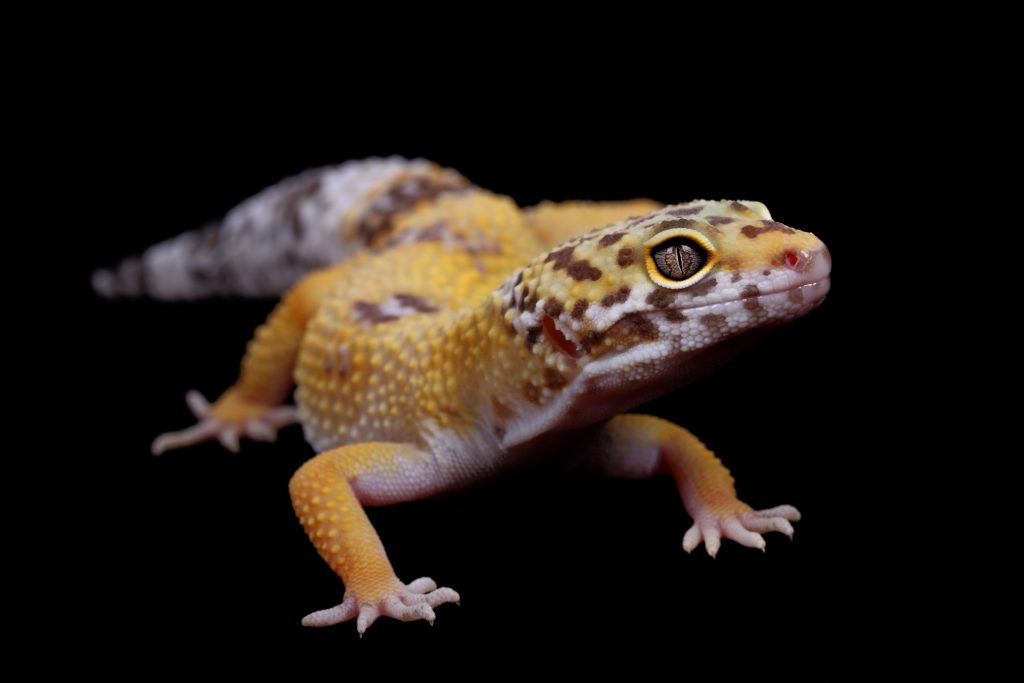
How do I know if my gecko is pregnant?
There are a couple of indicators to look out for to know whether your gecko is pregnant.
- A visibly swelling belly
- A torso that is hard to touch
- Decreasing appetite
- Disinterest in activity
- Irritable behavior
- Conspicuous eggs beneath their skin
How often do leopard geckos lay eggs?
Once the pairing process is over, the typical timeline for female leopard geckos is to produce eggs every couple of weeks. Usually, this is between 2 to 3 weeks stretched over a minimum of 4 months and at most, 5 months.
If the age of the female leopard gecko is under one year, or if no male is present, you will notice it produces unfertilized eggs. It will produce soft or squishy eggs that do not create babies.
To ensure the female leopard geckos produce healthy offspring, ensure they weigh between 50 to 55 grams. Female geckos who are between the age of 2 to 3 years are considered to be ideal for reproduction.
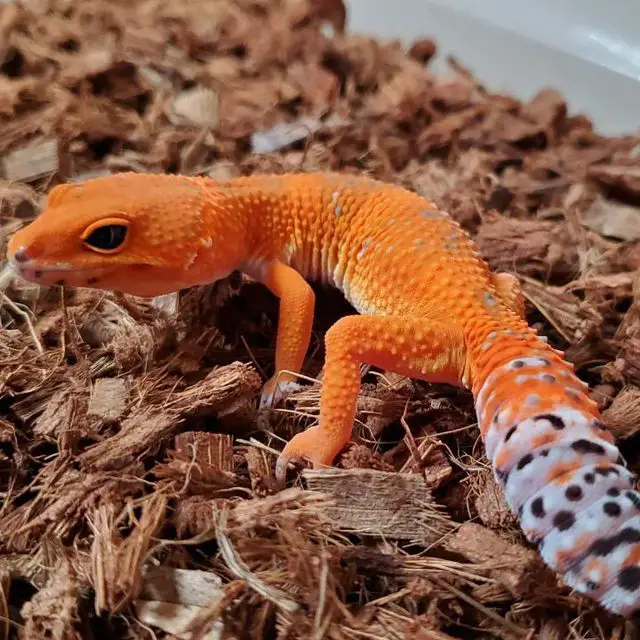
Do leopard geckos lay eggs without mating?
The short answer is yes, female leopard geckos are able to lay eggs even without mating. This is similar to the egg-laying behavior found in birds.
But it is to be noted that such eggs will be unfertile. They need the sperm of male leopard geckos to be able to successfully deliver eggs that conceive into offspring.
So you will find that your female geckos start laying eggs after reaching a sexually mature age. They will begin the ovulation process and lay eggs periodically, or even draw them back into their bodies.
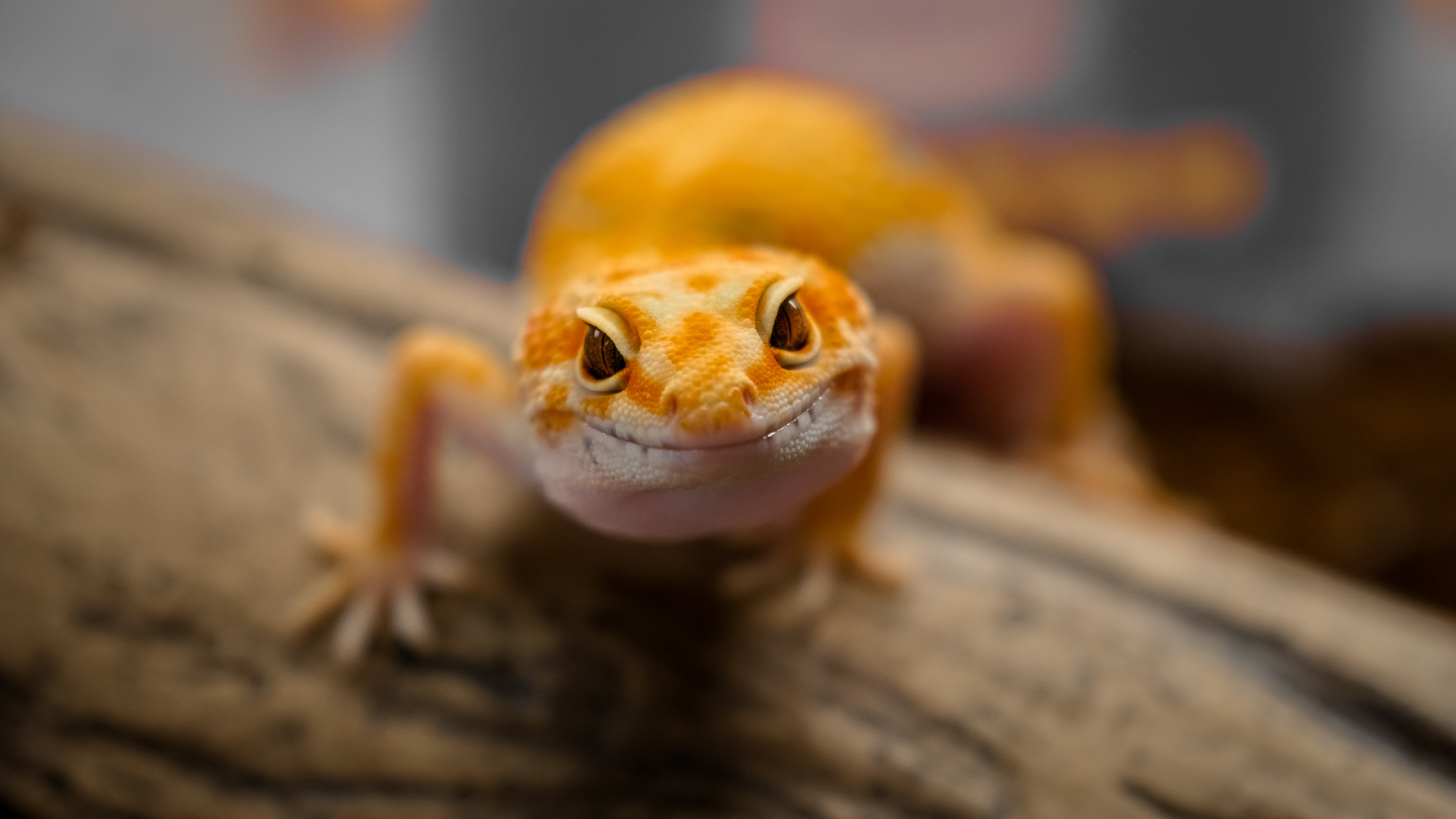
How long do leopard gecko eggs take to hatch?
Leopard gecko eggs are sex-determined based on temperature. This means incubating at lower temperatures gives you all females.
Incubating at higher temperatures gives you all males and incubating right in the middle gives you a mix of both.
The temperature range you’re looking for with female leopard geckos is 79 to 82 degrees. The temperature range for males considered to be ideal is 87 to 90 degrees.
It takes the female eggs around 60 days to hatch. Since males are incubated at higher temperatures, they take a relatively lesser time frame to hatch – around 45 days.
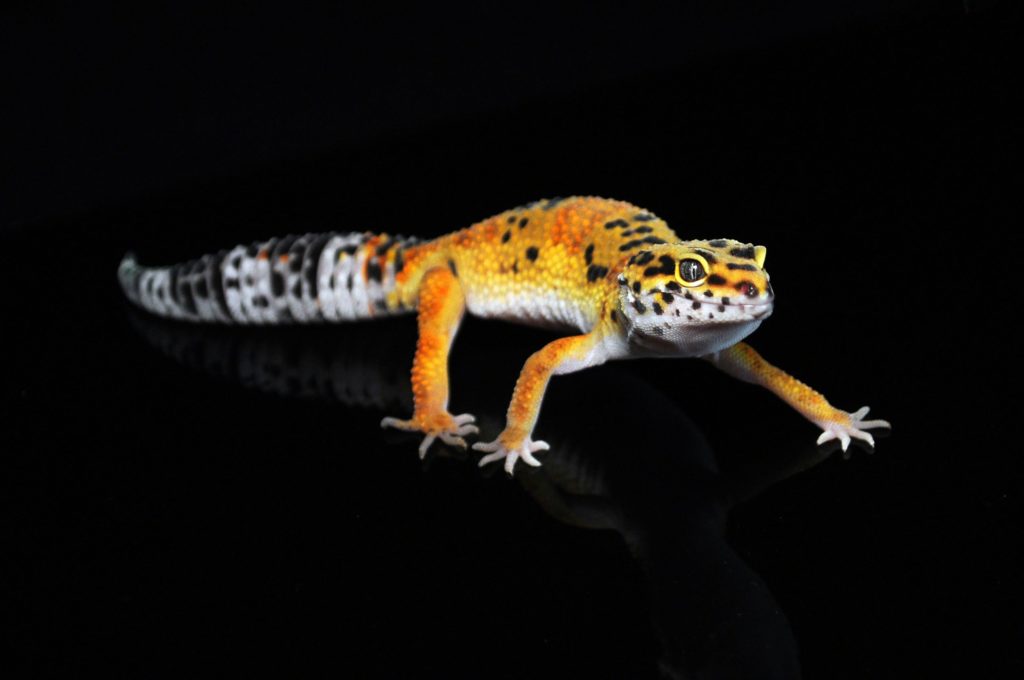
How do I know when my leopard gecko eggs will hatch?
Generally, the male-expectant eggs incubated at higher temperatures will automatically hatch after about 45 days. The female-expectant ones will begin hatching after a period of 2 months since they were subjected to lower temperatures.
Sometimes even after the 60-day or 45-day mark, only one of them might hatch. A good way to motivate the other to hatch is by gently ticking the surface of the egg a few times a day.
You can come back to check on it a couple of hours later or the next day. The most important thing is to keep track of the pregnancy and incubation timelines with a calendar.
Maintaining periodically updating records of breeding cycles and egg-laying data will give you a good idea of what to prepare for.
How to breed leopard geckos
To encourage the mating between your male and female leopard geckos, first place them both in a clean environment like a tub. Get rid of decorations like food bowls or water bowls because it gets in the way of pairing.
This will also help them meet and engage sooner. They will start a “dance” of sorts in a few minutes where they approach each other.
The male leopard gecko will “flirt” by nibbling or biting up and down the female leopard gecko. He would also start vibrating his tail.
The male leopard gecko would then get into position on top of the female gecko. This is their breeding position and you should leave them be and not separate them at this point.
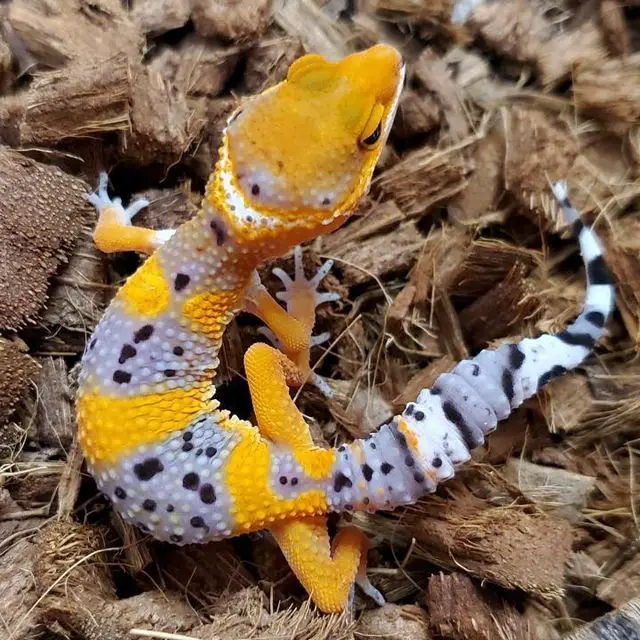
Are leopard geckos easy to breed?
Yes, leopard geckos are an easy species of geckos to breed. Typically most of them would breed successfully and produce healthy offspring if you take care of them at every stage.
However, some of them might pose some unique challenges like males being selective about their partners. Some female leopard geckos can also be catty and show aggressive behavior towards the males at times.
This can happen for a number of reasons like the female gecko not being interested or feeling the fertilization is already over. You can try a new male partner or try breeding again after some time.
Leopard gecko breeding behavior
Once a male and female leopard gecko get into position, they should be able to finish their mating process naturally by themselves. Other times, watch out for signs where the female rejects the male’s advances.
This may occur, because in the wild female Leopard Geckos mate with more than one male, as a way of trying to pick the best mates possible. Along the way, some inevitably get rejected.
That’s not the only reason, though. If she is fighting him, it could be that she is not ready for the breeding season. It could be that she is not ovulating or is underweight so it is important to diagnose her.
You can always try again a little later as you have some time during the breeding period. Female leopard geckos lay eggs every 2 or 3 weeks.
Sometimes, the male geckos might also be choosy and refuse to pair with a female or rebreed with the same one. Ultimately, it is important to understand the peculiarities of each gecko and be patient with them.
| Male breeding behavior | Female breeding behavior |
| – aggression towards other males | – standing completely still if she accepts the male |
| – vibrating his tail | – attacking the male if she rejects him |
| – biting the females neck while mating (don’t panic, it’s normal!) | – moving away when finished to look for other males |

Egg laying behavior
If you observe your female leopard gecko, you will know when the time is right for her to start producing eggs. She will display signs of moodiness, cease moving, have a bigger torso and refuse to eat.
It is vital to support her in the process of laying eggs. Make sure you provide a nesting box with a humid atmosphere.
Once she has laid the eggs, you can check if the eggs are fertilized or not by a method called candling.
This requires you to cast a light on the egg to check what they hold. If you see a shadowy figure beneath the surface of the shell, it means they are fertilized.
When your female is getting ready to lay eggs, don’t forget that there’s a few things she needs to help everything go to plan:
- enough food
- calcium and vitamin supplementation
- a humid nest box
- an enclosure in a quiet, safe location
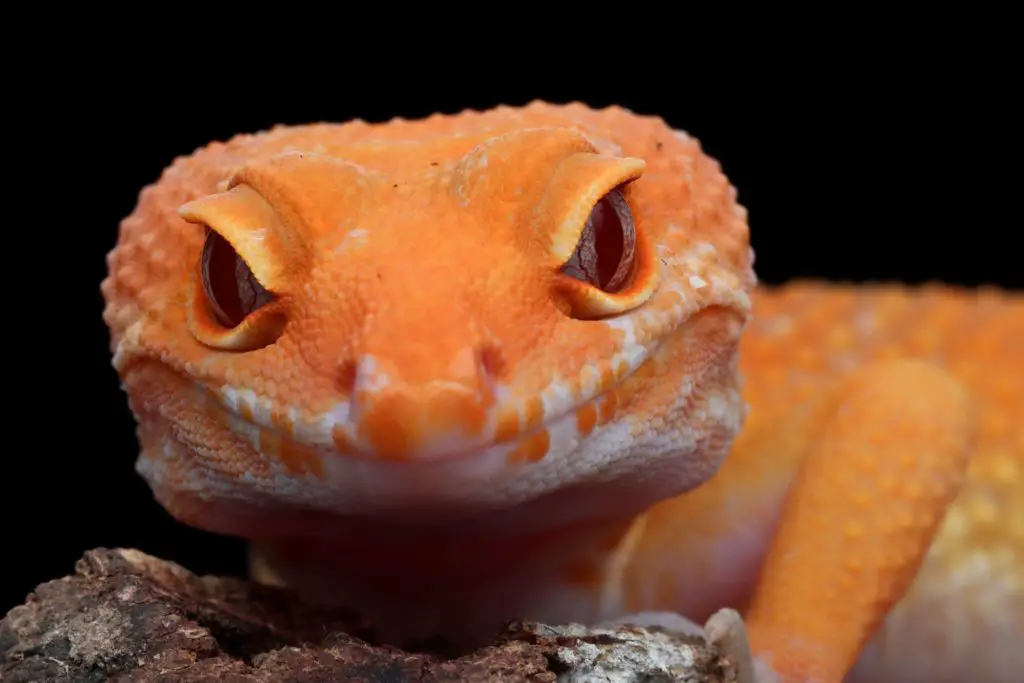
FAQ relating to when do leopard geckos breed
Read on to know the answers to some frequently asked questions related to the breeding of leopard geckos.
What time of year do leopard geckos breed?
Most female leopard geckos ovulate between December and March naturally. But if you have a leopard gecko you raised from a baby, it could start ovulation in a different month.
Ovulation can be seen on the torso of the female leopard gecko. You will find one or two bright pink colored dots, usually on the upper left and upper right side each.
After this, they should be receptive to the male and you can begin the breeding process.
How do I know if my leopard geckos are mating?
It is important to figure out whether the male and female leopard geckos have “locked” into their breeding position. You will notice them ceasing all movements once the male has aligned himself on top of the female.
Give them a few minutes and do not disturb them as that could injure the male leopard gecko. After this, you can notice both their behaviors to find out if they have successfully mated.
Usually, once the copulation is over, the female leopard gecko will no longer be interested in the male. The male gecko might even try to go for rebreeding but the female might lash out at him.
This indicates that the female gecko thinks the fertilization process is over and you can go ahead to put them in their own separate environments.
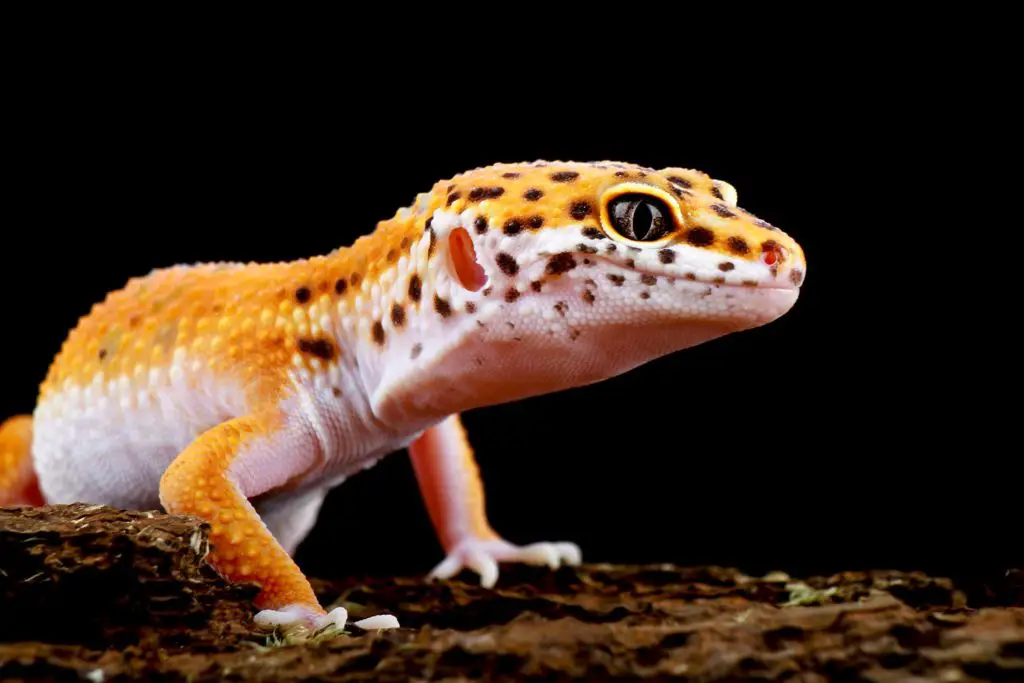
How often do female leopard geckos lay eggs?
Typically, female leopard geckos only lay eggs during the breeding time period. That is anytime from the end of a calendar year till the beginning months of the new year.
However, very rarely, some female leopard geckos have high levels of fertility. They are able to go through another season of laying eggs after a gap of 6 to 7 months.
So if one breeding period concludes in February, they might begin ovulation once more in September. So it mostly depends on your female leopard gecko.
How long does leopard gecko mating season last?
The general rule of thumb is that the mating period lasts for about a quarter of a year to 5 months. It begins with the onset of winter in November and continues into the spring months of February or March.
This is the mating period for a lot of reptiles as they seek warmth during the cold season and the females begin ovulating. You can begin pairing your male and female leopard geckos during this timeframe.

